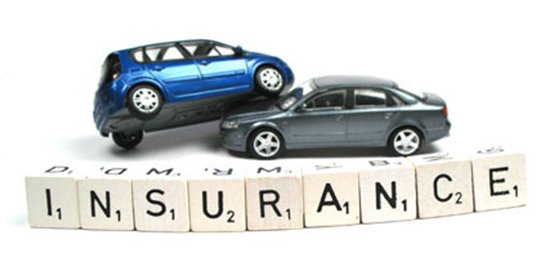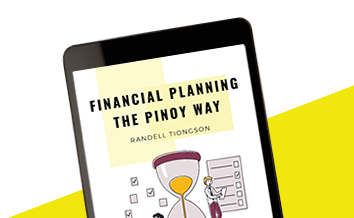2016 Outlook, part 3
By Randell Tiongson on January 21st, 2016
For the 3rd installment of my 2016 Outlook series, I am honored to present the views of the CEO of one of the largest insurance companies in the country today, AXA Philippines.
————–
The 2016 Outlook of Rien Hermans
This 2016, I see several positive factors across the key markets. They inevitably come with various degrees of risk as these markets undergo various political and economic transitions. This year will be by no means smooth sailing and the volatility of the market will be high, but quite clearly, there are several growth opportunities over the medium and long-term that seem to offer stable growth.
China’s economic slowdown— and its subsequent impact in markets across the globe— has created concerns, with the recent stock market lock-down seeming to reinforce a growing aversion for China exposure. But while its days of hyper-GDP growth are over, the Chinese economy is still expected to grow reasonably well 2016 and beyond, subject to the Chinese government’s ability to implement the proper reforms. Volatility is to be expected as it transitions from a manufacturing-reliant economy, to a more sustainable consumption driven one.
This transition will inevitably impact most emerging markets, particularly those in Asia. But as a whole, Asia is still expected to drive global growth over the next 3 years. The Philippines and its consumption driven economy in particular, remains well-positioned for a defensive economic theme amidst the global volatility. Understandably, the eventual results of the presidential election may potentially impact the degree of acceleration, but will not alter the upwards trajectory. The country’s economic fundamentals remain on solid footing, and shall remain through the political transition, pointing to sustainable economic growth.
The US has been recovering and recent figures show modest economic growth, which is expected to continue in the coming years and allows a slight increase in interest rates. The dollar can further strengthen against both the Euro and the Peso. The stock market in the US, which has been recovering over the past two years, is expected to show a slight positive growth, with the expectations that sectors like the digital oriented stocks will outperform.
I expect the European markets to outperform the global markets in 2016, as Europe has clearly started its recovery and economic growth is expected in the major economies within the Euro zone. This will further be accelerated by the stronger competitive position as a result of the lower Euro.
This 2016, the best strategy seems to be to diversify and have a long-term mind-set. Balance investments among markets with a strong consumption theme, like the Philippines, while considering developed markets like Europe and include some exposure in US-denominated funds to benefit not only from the growth of the overseas markets, but also from the stronger currency.
—————–

Convinced of the value that financial products deliver to customers Rien has spent over 2 decades in the financial service industry in the fields of product development, distribution, marketing, strategy and general management.
In 1990 he started with ING Bank in the Netherlands, where he was responsible for developing and implementing Life insurance as a new product group offered by the bank. His analytical skills and strategic vision were recognized and for 4 years he was vice president Strategy & Planning advising the Board of ING on strategic issues.
In 1999 he moved to Asia and after a short stint in Hong Kong he was assigned as the CEO of ING Life as well as CEO of Aetna Life & Healthcare in the Philippines, Executive Director and General Manager of ING Malaysia and the last position he held in ING was Board Member of ING Financial Services Poland.
In 2009 Rien ‘crossed the line’ and joined AXA with the assignment to transform AXA Philippines into a strong player on the domestic market with a sustainable position in the top 5. Focused to be the best in the eyes of the customers the company has strengthened its position in the growing life insurance and investment market in the Philippines.
5 Car Insurance Mistakes Pinoys Make
By Randell Tiongson on November 20th, 2015

The Philippines ranks in the top 10 globally of consumers intent on purchasing a car in the next two years according to the Nielsen Global Survey of Automotive Demand. Another interesting fact is that the Philippines ranks highest globally among current car owners intending to upgrade their cars. With the automotive industry in the country booming – the year-on-year car sales for the month of January 2015 increased by 19.3% according to CAMPI* –this means that more cars on the roads equals higher chances for accidents. Unfortunately, there’s no way to tell when an accident will strike, no matter how prepared we are. Aside from driving defensively, the best way to protect ourselves on the road is to have car insurance.
I talked to a MoneyMax.ph representative, the Philippines’ leading comparison platform for car insurance, on the need-to-know when buying one. A common fact I received is that many prefer to get the lowest premium even if this is not always the best choice. Read on to find out common car insurance mistakes Pinoys make when shopping for such:
- Using price as the determining factor
Monthly premium payments for car insurance can take up a portion of our monthly budget. We know the importance of insurance, so people apply for insurance just for the sake of having insurance and thus settle for the most affordable price. Settling for the cheapest option can be a mistake when you’re not getting the coverage you need. Make sure that before you agree to an insurance policy and its pricing, read the entire policy from front to back. Ensure that everything you agreed on with the adviser is stated in the policy. Coverage you may look for includes the following: road assistance, legal assistance, and acts of nature coverage.
- Undervaluing your car to get a smaller premium
Say your car has a fair market value (FMV) of Php 1 million, but you prefer to value it at Php 800,000 to get a lower insurance premium. You may save on your monthly insurance payment, but in the unfortunate event that you get into an accident and your car is totaled, you may not be able to get the total coverage fit for your million-peso car. This is because a lower premium payment will you give you insurance coverage for a vehicle of lower FMV. When buying car insurance, it’s best to state the full FMV of your vehicle to get complete insurance coverage.
- Failing to research and shop around
Shopping for car insurance, be it online or hopping from one broker to another, may be tiresome. Visiting one webpage to the next can take up a chunk for your time, and you may find yourself experiencing analysis paralysis with all the information you’ve found. Now, you need to find the best deal for you. This may be tiring, but it’s best to research and shop around if you want to get the best deal. This is the beauty of financial comparison websites, such as MoneyMax.ph. You have everything you need in one place, just like a department store. Using comparison platforms will give you the information you need – in this case, car insurance coverage from the country’s leading providers – all in one page. It definitely pays to do your research.
- Not considering additional coverage
Additional coverage may include roadside assistance, fire and external explosion protection, and an Acts of Nature coverage which protects your car against natural disasters. It’s best to discuss your insurance application in full detail with your agent. This way you can ensure that you’re getting complete coverage for an affordable price. With the Philippines experiencing an average of 20 typhoons a year, you may consider an Acts of Nature coverage which covers you from natural disasters, such as typhoons, floods, and earthquakes among others.
- Forgetting to ask for a discount
Car insurance rates vary depending on the type of driver you are. If you have a squeaky clean driving record, don’t hesitate to ask your agent for a discount on your insurance. You might just be able to shave a few pesos off your monthly payments. This is because having a good driving record and having safe driving habits make you less likely to get into an accident and make an insurance claim. If you believe that you won’t be claiming your car insurance on a regular basis, don’t hesitate to ask for a discount.
Need for speed
Driving a car gets us from points A to B in the fastest and most convenient way possible; however, it’s best to be safe. This means driving safely and having the peace of mind that you’re protected with car insurance. I hope that my chat with MoneyMax.ph was able to help you.
*Chamber of Automotive Manufacturers of the Philippines, Inc. (CAMPI)
Where should I invest? Mutual funds, UITF, VUL or stocks?
By Randell Tiongson on September 1st, 2015

Question: HI, I’ve recently decided to start investing, but I don’t know which product I should choose. Should I invest in variable universal life insurance, a mutual fund, UITF or buy stocks? —Asked by Josiah via Facebook
Answer: First of all, congratulations on taking this important step in your journey to financial peace! But the question of which product is right for you depends on where you are in life and what your goals are. While I can’t make any specific recommendation because I don’t know more about your financial situation, I can give you a broad overview of each product you mentioned to help you make the right decision.
I’m an advocate of life insurance, which is something Filipinos sorely lack. Variable life insurance (or VUL) is a product you can consider if you need both insurance and investment. VUL will give you insurance benefits but it will also have a fund that is being invested according to your objectives, risk profile and other preferences. If there are already people depending on your income, you should get a life insurance policy. But if your sole objective is purely investing, then this may not be the right instrument for you at this time, because in the first couple of years of your policy, most of your money will actually go toward premium payments.
If what you want is to put all your money in investments, and your risk tolerance is moderate to high, UITFs and mutual funds can work for you. A big advantage of these is that they are professionally managed by experienced investment managers, who are trained to invest properly. Even if you yourself are not well-versed in investing, you can rest assured that you’re in good hands.
The main difference between these two is that UITFs are offered by banks, while mutual funds are their own companies. By buying into a UITF, you own units of this fund. By buying into a mutual fund, you own shares and become a shareholder in the mutual fund company. All your earnings are net of tax and fees as represented by the NAVpu (net asset value per unit) for UITFs and NAVps (net asset value per share) for mutual funds.
When it comes to these pooled funds, you can choose from a variety of investments for every risk appetite. You can also choose among actively managed funds, where a fund manager tries to beat the index, or passively managed funds, which simply try to match the performance of an index.
In more economically advanced countries, passively managed funds match or outdo the performance of actively managed funds because those markets are already efficient. However, in younger markets like in the Philippines, active fund managers can still perform better than the index because the market is not efficient yet and there are still advantages they can leverage.
However, investing in mutual funds and UITFs comes with some disadvantages. The management costs can be significant, going to up to 2 percent. For UITFs, sometimes the bank branch staff aren’t trained to handle inquiries, and some of them might even discourage you.
Mutual funds and UITFs will work for you if you don’t need the money right away and can stand risk, but don’t have the time to learn all about stocks. They’re also a good vehicle for retirement funds because the long-term nature of your need will allow you to weather the fluctuations of the market. I’m encouraged by the good performance of many funds over the last few years, but keep in mind that past performance is never an indication of future performance.
Now we come to the elephant in the room: stock investing.
Individual stocks come with a lot of advantages: you have direct control over what you buy, unlike in a pooled fund that is automatically diversified. You get residual income if you buy a stock which pays out good dividends. Your returns are maximized because you’re not paying management fees, and if your individual stock outdoes the market, you make money even if the market as a whole is going down. And if you choose the right balance of stocks, your portfolio’s growth can outperform the index.
But! Before you start counting your chickens, know that stock investing is not easy to get into. You’re going to have to spend a lot of time learning about how it works. You’ll also have to learn fundamental and technical analysis, spending time reading financial reports from the companies you want to invest in and learning market trends to make the best investment choices. And to be properly diversified, you’ll need to start with a big capital; otherwise, you’ll be limited in the kind of stocks you can add to your portfolio.
Bottom line: if you want the protection of life insurance, go for a VUL. If you want to participate in the growth of the Philippine economy but don’t have the know-how to go into stocks, choose a mutual fund or a UITF.
If you have the time to learn, money to invest, and aggressiveness to match, stocks may be for you.
There are a lot of options for you if you want to start moving your money out of a savings account and into a product that can work harder for you. If you are a new investor, I recommend you invest in a pooled fund first as you learn how the stock market works and develop your competency in investing. Once you’re confident that you’ve learned enough, then you can invest in the stock market.
Whatever undertaking you choose, it must have a good foundation—this is true for investments as well. Develop your base of good money management, savvy saving, and common sense, and this solid foundation will bring you real prosperity.




